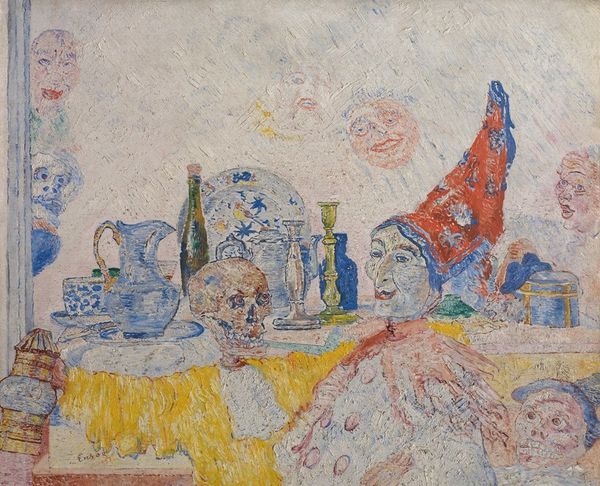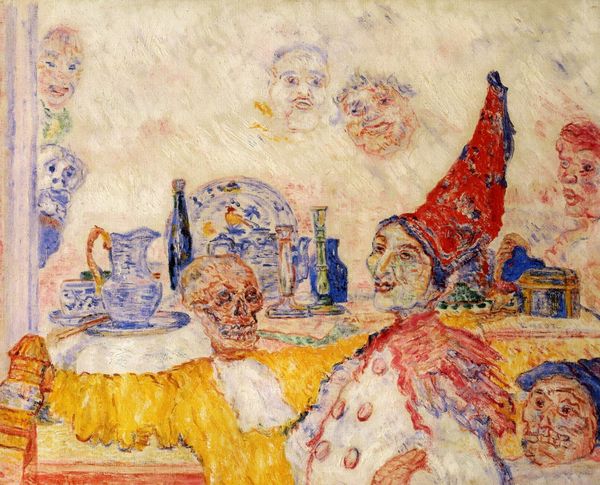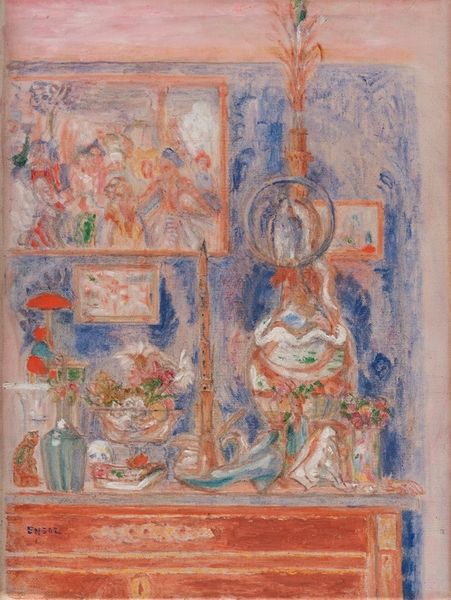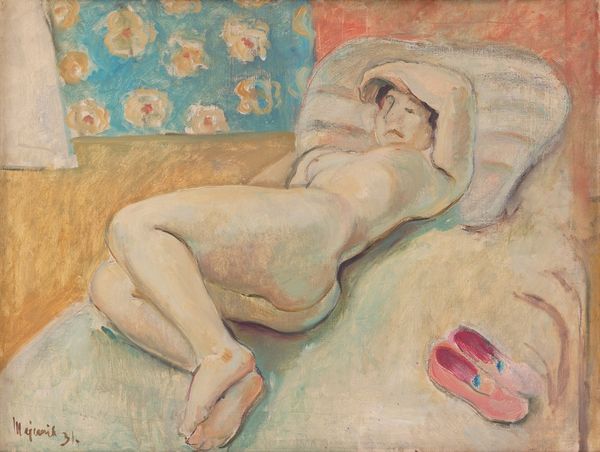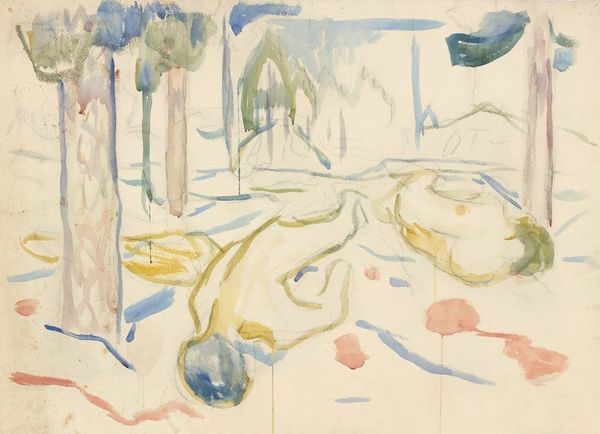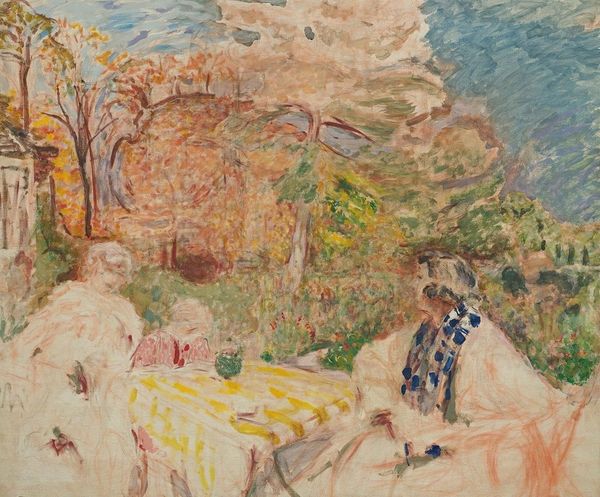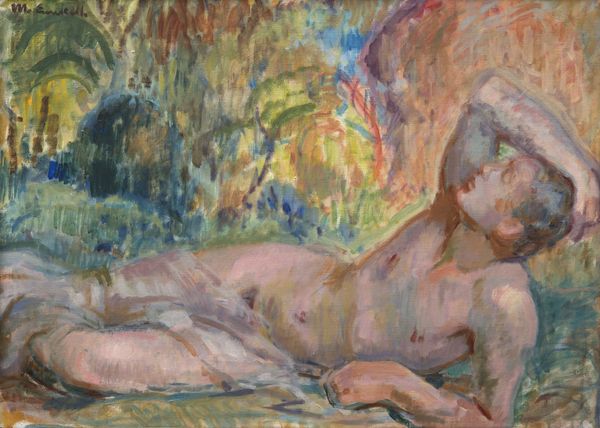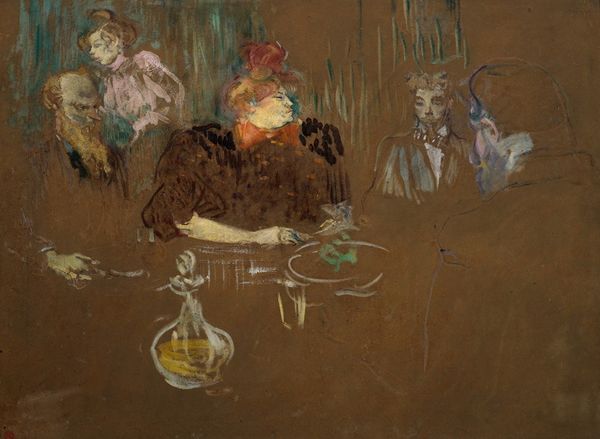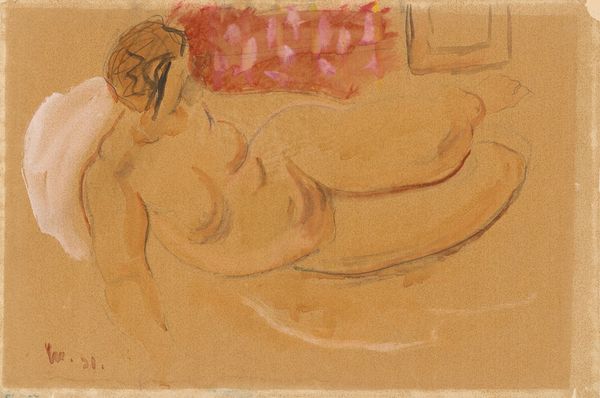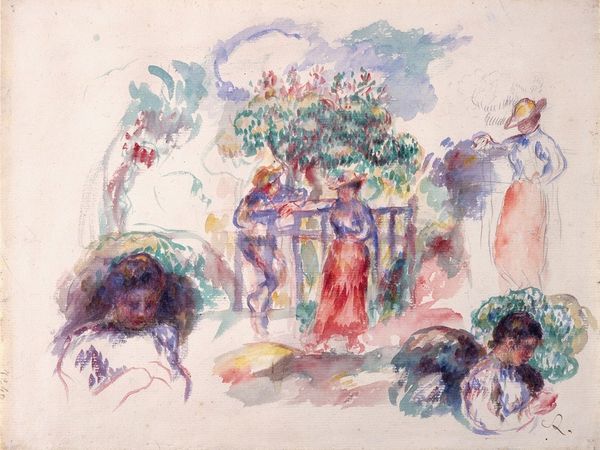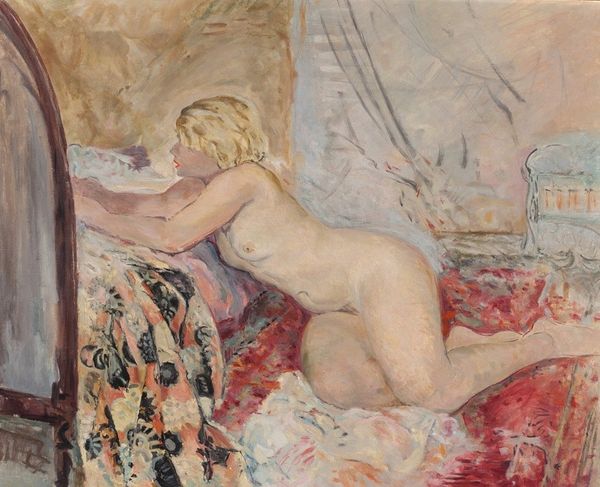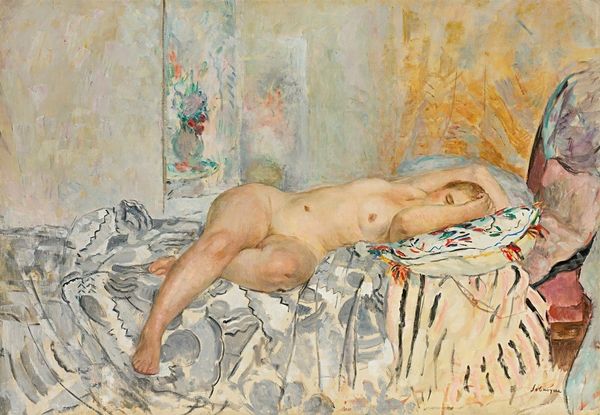
Copyright: Public Domain: Artvee
Curator: "Coquilles et statuettes," or "Shells and Statuettes," a 1934 oil painting by James Ensor. I’m struck by its almost dreamlike quality, with these commonplace objects transformed into something otherworldly. What’s your initial reaction? Editor: I see that too. The pastels create a very soft mood, almost muted. But there's also something unsettling about the mask and the seemingly random arrangement of the shells and statuettes. How do you interpret this work? Curator: Well, let's think about Ensor's broader work. He often used masks to critique societal hypocrisy and expose hidden truths. Could this arrangement be a commentary on bourgeois life and artistic conventions? The statuettes representing idealized forms, the shells natural objects. Is Ensor contrasting these against the performative facade represented by the mask? Editor: That’s interesting, so the mask isn't just a prop; it's a statement about authenticity, or the lack thereof. Curator: Precisely. Think about it in the context of the interwar period – a time of profound social and political upheaval. Is he suggesting that behind the veneer of respectability, there’s something grotesque lurking? And what about the title itself, "Shells and Statuettes"? What power structures could the words expose or underscore? Editor: That really makes you wonder, if it is less of an intimist painting, and something really loaded. What do the shells signify? Are they linked to Ensor’s Belgian identity, shells being brought in through trade in this major port of entry in Europe? Curator: I'm thinking he wanted to bring us here – what’s really great art if not something that helps us reframe and question? Editor: Exactly. I'll never see a still life the same way again. Curator: Nor will I.
Comments
No comments
Be the first to comment and join the conversation on the ultimate creative platform.
